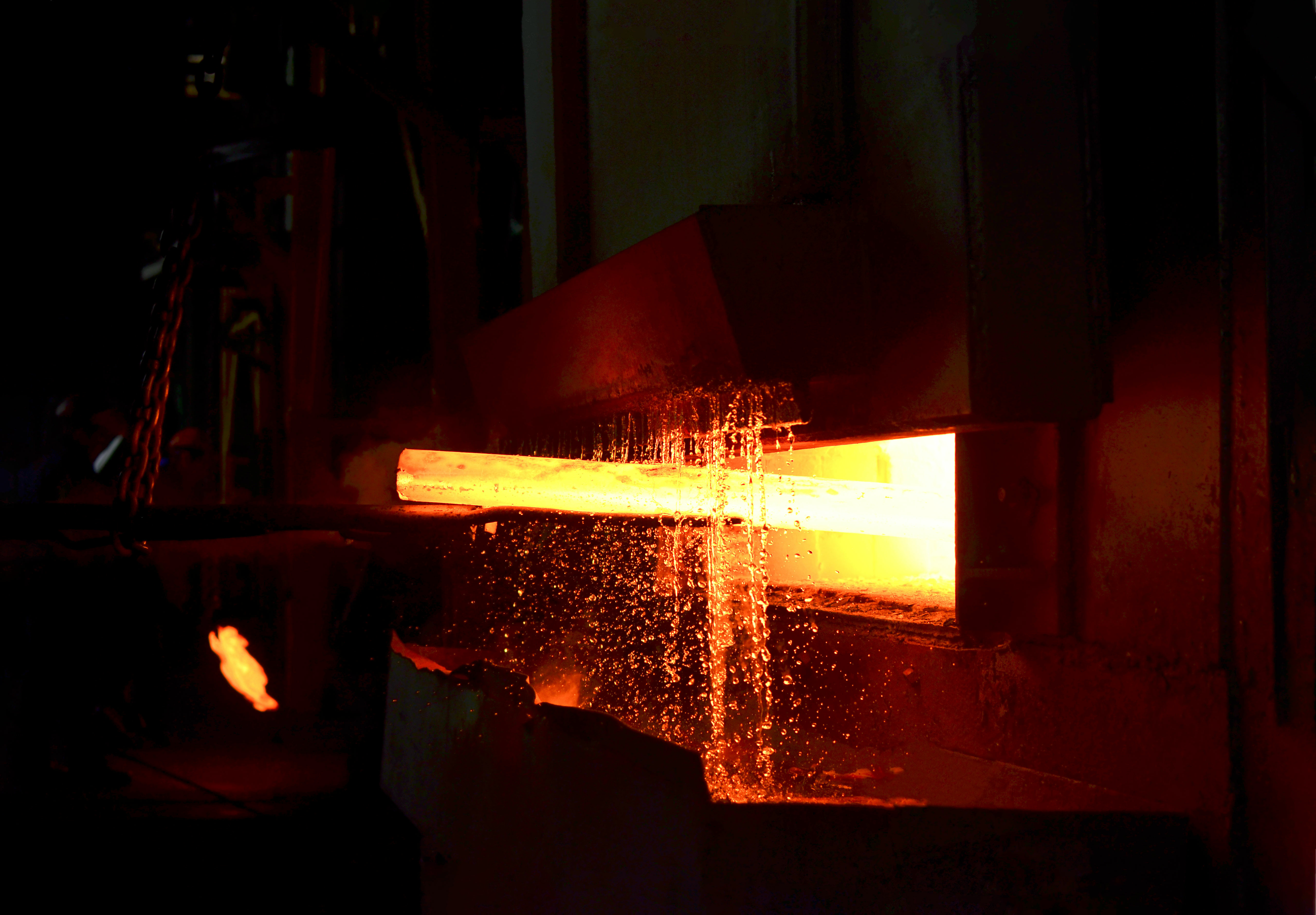Heat Treating Steel

Heat treating metals alters the physical and sometimes chemical properties of the material. As the name suggests, Heat treating is the process of heating and chilling steel, stainless steel, or aluminum, often to extreme temperatures causing the metal to soften or harden, depending on the techniques used. The primary techniques are:
- Annealing
- Case Hardening
- Precipitation hardening
- Tempering
- Carburizing
- Quenching
Heat treatments can be a simple or very complex schedule of these techniques.
Annealing
For steel or other ferrous metal, annealing is performed by heating the steel until it is glowing, then slowly letting it cool at room temperature. Annealing metal removes the hardness created by cold working and improves ductility. Once annealed, the metal is worked more without fear of breaking.
Case Hardening
This technique forms a hard surface on the metal object while leaving deeper metal softer. Case hardening is performed on metal objects after their final shape. While steel is at a very high temperature, nitrogen and/or boron are diffused into the outer layer of steel.
Precipitation strengthening
This technique increases the yield strength of malleable materials. It is most often used to create specific aluminum alloys. This process is quite complex and involves precise timing of the heating and cooling. Often the metal is left in the heat for a long time in a process called aging. The metal is then cooled in a very controlled way to cause the physical structure of the metal bonds to change.
Tempering
Tempering increases the toughness of ferrous alloys; it reduces some of the excess hardness introduced by cold working steel while not bringing it back to full ductility. The steel is heated to a precise temperature below a critical point (glowing) for a certain time. Hard tools are tempered at low temperatures, while springs are tempered at higher temperatures.
Carburizing
Iron, steel, and other ferrous metals absorb carbon when heated in a carbon-rich environment, such as charcoal or carbon monoxide. The metal is then cooled rapidly to lock the higher carbon content on the outer layer, producing a result like case hardening (though far less precise) where the surface of the metal is much harder than the inside.
Quenching
Quenching steel or other metals causes them to harden. Steel is uniformly heated to red hot; it is then “soaked” at that temperature in air, liquid, or in a vacuum. After soaking, the workpiece is cooled rapidly in either water or oil. Water produces the hardest and most brittle product. After quenching, steel is often tempered to make it less brittle.
Categories: Cool Stuff